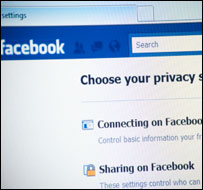
More than 90% of online teens participate in social media, according to estimates from the Pew Internet & American Life Project. Facebook is the largest of the social networking sites — according to company records, the number of Facebook users rose from 845 million to more than 1 billion over the period November 2011 to October 2012, or approximately 14% of the world population.
Many of these Facebook users are children and adolescents: a 2011 Consumer Reports survey estimated that, of the 20 million active U.S. Facebook users who are minors, 7.5 million were younger than 13. As these trends have developed, parents and policy makers have become increasingly concerned with the safety of young people online. The 1998 Children’s Online Privacy Protection Act (COPPA), which required that children age 13 or younger gain explicit parental consent to access commercial websites, was a bid to protect the privacy and safety of younger netizens. But this prohibition is easily circumvented both at the point of site registration and by parents eager to help their children gain access. How likely — and necessary — is it that adolescents understand and utilize Facebook’s privacy controls? What are the harms experienced by younger site users?
A 2012 study from the University of Guelph and the University of Toronto published in the Journal of Adolescent Research, “Risky Disclosures on Facebook: The Effect of Having a Bad Experience on Online Behavior,” examines how teens describe negative interactions on Facebook and whether these bad experiences influence their privacy and disclosure behaviors online. Researchers recruited 256 Facebook users ages 12-18 at a local science center to complete a multiple choice survey with an essay component on Facebook’s privacy settings and negative experiences on the site.
The study’s findings include:
- A participant who had a negative experience on Facebook was more likely to seek out and use the site’s privacy settings: “Having a bad experience predicts precautionary behaviors against future bad experiences. Specifically, participants who had a negative experience on Facebook were more likely to know about and use the privacy settings.”
- “The most common bad experience was bullying, meanness, and harassment from peers (52% of the bad experiences).” The researchers suggest that bullying behavior on Facebook was facilitated in part by the ability to converse with others on the site anonymously.
- “Once adolescents had experienced something negative personally, they were more likely to seek out information about the privacy settings and use those settings to protect their information.” Girls were more likely than boys overall to utilize Facebook’s privacy settings.
- Overall, about one-quarter of study participants (26.7%) reported at least one negative experience on Facebook. Of these, the researchers identified four major categories: bullying/meanness (52%); unwanted contact (23%); exposure/unintentional disclosure (17%); and misunderstandings with a friend or supervisor (7%).
The authors note that “participants’ behavior may well depend on what they are exposed to online. It is possible that those who do not receive unwanted comments or requests have no need to employ the privacy settings,” but recommend that users be taught the complexities of information disclosure online and taught about privacy settings on Facebook to help them avoid problematic situations before they occur.
In related research, a 2012 study published in Social Psychological and Personality Science, “Misplaced Confidences: Privacy and the Control Paradox,” investigates the extent to which a user’s sense of control influences the type and amount of personal information disclosed online.
Keywords: youth, Facebook, emerging adulthood, media, positive youth development, risk behavior
